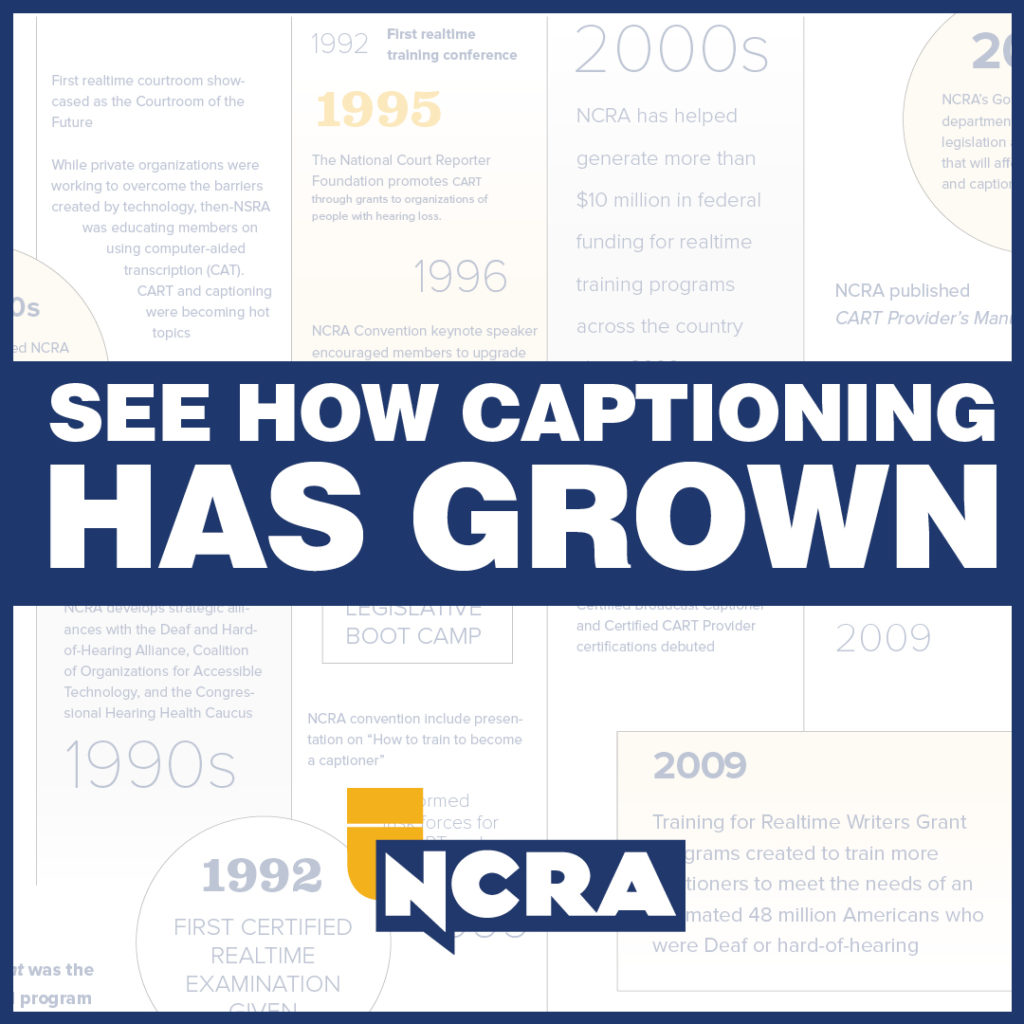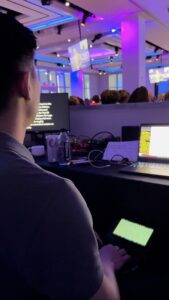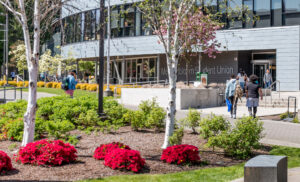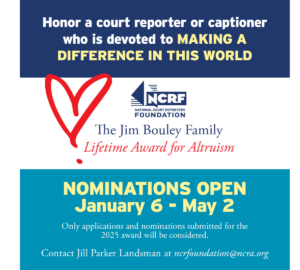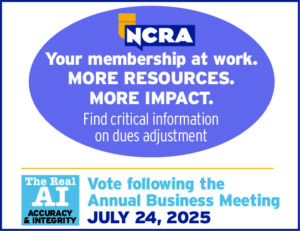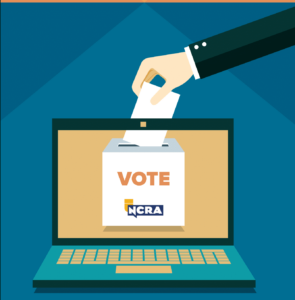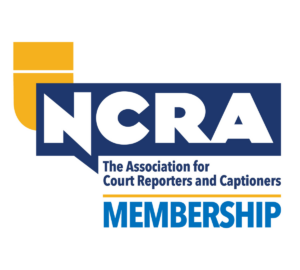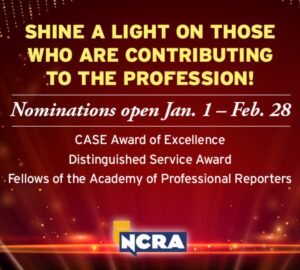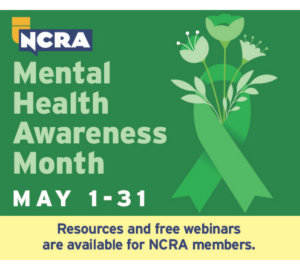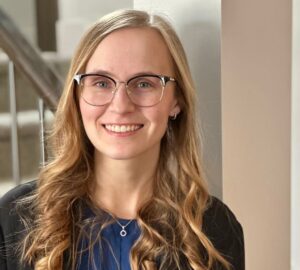By Carol Studenmund
I live in Portland, Ore., and I am one of the owners of LNS Court Reporting and LNS Captioning along with Robin Nodland. I manage LNS Captioning, and she manages LNS Court Reporting. I began captioning in 1992. I’ve had the joy of captioning two Super Bowls for fans and players in the stadiums, and I have had the heartbreak of captioning way too many mass shooting events. In between are many hours listening to the public testify at city council meetings and inconsequential but sweet stories about kittens and puppies. I love my job and would not trade it for anything.
Evolution of a captioner
I can trace the evolution of captioning in my own personal development.
In April 1992 I attended the first NCRA realtime writing conference, held in Seattle, Wash. The staff of the National Captioning Institute and VITAC took about 200 people through the paces of writing in real time without conflicts or undefined steno. At this conference, I found a path to follow to become a live captioner. From this foundation, I and many others started our immersion into the pool of qualified live captioners.
In July 1992, at the NCRA convention in Chicago, I sat for the brand-new Certified Realtime Reporter examination, and I did not pass. I returned to take the test at the next convention and passed. Passing that test was hard, and I put a lot of work into being ready for it the second time around. I gained a ton of confidence in my writing and my ability to stay cool under pressure.
In 1994, I was asked to participate in a training conference held by NCRA. Over the next few years, I traveled the country as part of a team of NCRA members who trained even more people to become great realtime writers, and many of them joined the world of live captioning. The people I taught with inspired me to keep working on my writing, and still I consider them mentors who could help answer my questions about so many topics relating to captioning. I have benefited greatly from the training, the certification, and the networking I have found through NCRA.
Captioners were a part of NCRA from the beginning
A meme going around the social media world of live captioning asks: “What has NCRA ever done for captioning?” Trust me, a great amount of energy and hard work on behalf of NCRA leadership and members built the foundation for the field of professional, certified live captioners.
Marty Block, RPR (Ret.), then of the National Captioning Institute, provided the first live captioning on live television in the world for the 1982 Academy Awards ceremony. No faxes or emails were sent with prep material. Someone from NCI flew to Los Angeles to pick up — literally — the Oscars’ script for Marty. Marty went on to become president of NCRA and one of the founders of VITAC. Other past presidents of NCRA who are or were captioners include Joe Karlovits, RDR (Ret.); Judy Brentano, RPR (Ret.); Kathy DiLorenzo, FAPR, RDR, CRR, CRC; and Karen Yates, FAPR, RPR, CRR, CRC.
Karlovits became the first person to caption for a deaf lawyer when that lawyer argued a case before the United States Supreme Court in 1982. His work received a great deal of publicity across the country. Many firsts in captioning were celebrated by the community of people with hearing disabilities as more and more TV programs and other live events became accessible.
Advocating for captioning
In the early 2000s, NCRA helped obtain funding for Mississippi State University to develop a workforce development program for captioning. Jan Bounds oversaw an excellent bachelor’s degree in a court reporting program at Ole Miss. The Mississippi Congressional delegation went to bat for a $500,000 grant to create this program to train court reporters to become live captioners. NCRA threw its weight behind this effort, led by Dave Wenhold, then our lobbyist, now our Executive Director. Ole Miss hired EduCaption, Inc., out of Atlanta, to create and implement the program. Past president Judy Brentano and current NCRA board member Heidi Thomas, FAPR, RDR, CRR, CRC, created the program and toured the country to train captioners. When I come across someone trained in this program, their résumé goes to the top of the pile. EduCaption has moved around over the years and is now known as Learn to Caption, which is run by NCRA member Anissa Nierenberger, RPR, CRR, CRC, CRI. NCRA has lobbied Congress for retraining funds year after year, funds which helped many realtime writing programs become established across the country.
NCRA develops a certification program for captioners
In 2003, the Certified CART Provider and Certified Broadcast Captioner program began by providing CRR holders with a written knowledge test that demonstrated the test candidate’s knowledge of working in the broadcast world and/or the CART captioning world. Many captioners quickly took both exams and obtained both certifications. By 2015 the CRR became a true judicial reporter exam by becoming a testimony-only skills test. The Certified Realtime Captioner program was launched in 2015, when the two written knowledge tests were combined into one exam, and the skills portion of the certification became a test at 180 words per minute with a 96 percent accuracy rate required to pass.
NCRA has worked throughout the years to raise awareness of our certification programs, including the CRC. As a result of that work, I have replied to several Requests for Proposals that specifically required captioners to be holders of our CRC as part of the contract.
NCRA building best practices for captioning
In 2012, the Canadian Radio Television Commission (CRTC) created a caption accuracy program that just about all live captioners — in Canada and the United States — felt was draconian and onerous. Just to state the obvious, live captioners do not control what is being said on TV. We cannot tell the weather guy to slow down. We caption what we are given. We all strive for 100 percent accuracy for 100 percent of the words. However, people talk over each other. Politicians yell at each other. It’s part of the job. The CRTC’s plan involved CRTC staff obtaining the actual audio file of a TV program and the captions that were created by the live captioner assigned to that program. The staff person then would evaluate the captioner’s accuracy rate compared against the actual words said. When I’m racing to keep up, I will drop “okay” or someone repeating themselves, those types of things. Those would all be counted as errors against my accuracy rate.
That same year, I was the chairperson of the Captioning Community of Interest. My fellow committee members and I agreed we did not want anything like the Canadian plan to come to the United States. We decided to take the bull by the horns and control our futures. We created a document that outlined the roles of everyone involved in bringing live captioning to TV. When I am working as a captioner, what are my duties and responsibilities? When I am operating in my role as a firm owner, what must I make sure happens to get my captioners’ captions to the program on time and as accurately as possible? What roles do my local network affiliates and local cable providers play in getting our captions delivered to the viewers without any technical errors? We even included a part in this process for the caption consumer to provide feedback to the FCC about their experiences watching captioned programming.
Once Adam Finkel, our then-government relations staff person at NCRA, had vetted our Best Practices with the national organizations for people with hearing disabilities, we were ready to take our best practices to the next level: the Federal Communications Commission (FCC). Finkel made an appointment with the FCC to share our Best Practices. Their response? “We love this.” We did not ask the FCC to grade papers. Our best practices scenario let everyone know what part of the process they were responsible for. In 2015, the FCC’s Rules for Broadcast Captioning Quality were approved and made into law.
Is there anything else I should know?
NCRA’s current president, Max Curry, RPR, CRI, wants to bring as many captioners into NCRA as he can find. The more members we have, the more work NCRA can do on behalf of us all. I urge you, if you are a captioner and haven’t earned the CRC, put that on your to-do list and work hard to pass that test. If you have already earned the CRC, continue your education. There is always more to learn about this great, big world of ours, and you never know what will come up when you caption. If you work with other captioners, encourage them to become members of NCRA and to earn these certifications. Together, we can do wonderful things.
Carol Studenmund, FAPR, RDR, CRR, CRC, is a captioner based in Portland, Ore., and chair of the NCRA Captioning Regulatory Policy Committee. She can be reached at cstudenmund@LNSCaptioning.com.
